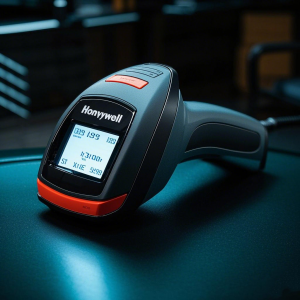
The Honeywell Xenon 1902 is a cordless area-imaging scanner that utilizes Bluetooth as its standard interface. It is powered by a 1800mAh lithium-ion battery with an input voltage of 5V, allowing for up to 50,000 reads per charge and consuming 0.5W in standby mode. Weighing 214g, it is shockproof and has an IP41 rating, signifying limited protection against dust and water ingress.For comprehensive information on its features, setup, and operation, you can refer to the User’s Guide available at the following link:
Xenon 1900/1902 Area-Imaging Scanner User’s Guide
Basic Operations
- Connection: It can be connected to computers or other devices via Bluetooth or USB. For Bluetooth connection, go to the “settings” menu on the scanner to initiate the pairing process. For USB connection, simply plug in the USB cable to the scanner and the computer.
- Scanning: Hold the scanner over the barcode, pull the trigger, and center the aiming beam on the barcode. The viewfinder projects an aiming beam that should be centered over the barcode, but it can be positioned in any direction for a good read.
Programming and Customization
- Customizing Settings: The settings of the scanner can be customized by scanning the desired programming barcodes available in the user guide. These barcodes contain specific commands that modify the scanner’s behavior, such as enabling or disabling certain barcode types, setting the output format, and adjusting the trigger mode.
- Trigger Modes: There are two trigger modes: manual trigger-normal mode (need to press the trigger to read) and presentation mode (the scanner is activated when it “sees” a barcode).
Charging and Battery Management
The scanner has a battery status indicator. When the battery is running low, the LED on the scanner will flash in amber color. It is recommended to charge the scanner when this occurs to ensure uninterrupted scanning. The charging time is 4.5 hours.
Maintenance and Care
- Cleaning: Refer to the user’s guide for information about cleaning the device.
- Disposal: In order to avoid the dissemination of harmful substances and to diminish the pressure on natural resources, it is recommended to use the appropriate take-back systems for product disposal.